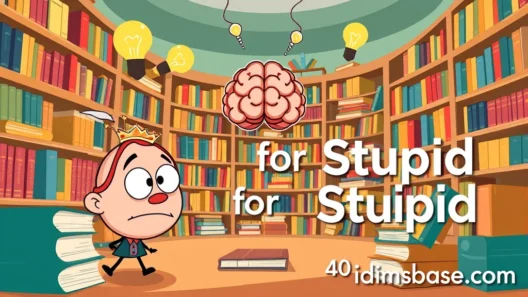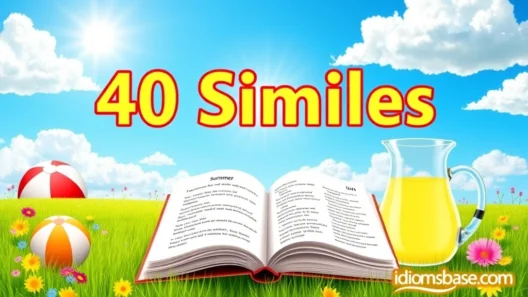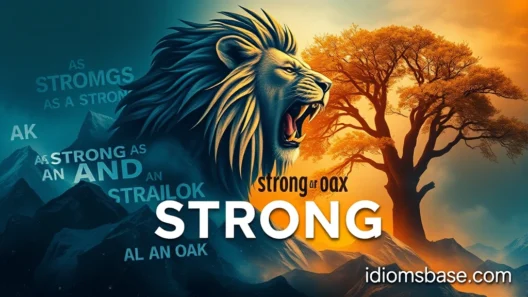Hey there, sunshine seeker! Ever tried to describe the sun's magic and found yourself grasping for the right words? You know, that brilliant orb that warms our planet, paints our skies, and sparks joy in our hearts? It’s more than just a giant ball of gas; it’s a muse for poets, a beacon for travelers, and a symbol for so much more.
Sometimes, a simple "the sun is bright" just doesn't cut it, right? You want to convey its power, its warmth, its beauty, or even its sometimes blinding intensity. That's where similes come in! Similes are like little linguistic superpowers, allowing us to compare one thing to another using "like" or "as," painting vivid pictures in the reader's mind. They help us understand complex ideas by relating them to familiar ones, making our language richer and more evocative.
So, get ready to ignite your imagination! We've curated a dazzling collection of 40 similes for the sun, perfect for adding a touch of brilliance to your writing, conversations, or just your everyday musings. Whether you're crafting a story, writing a song, or simply admiring a sunrise, these comparisons will help you articulate the sun's many splendors. Let's dive in and bask in the glow of these creative comparisons!
40 Similes for Sun: Illuminating Your Imagination
Here’s our curated list, designed to spark your creativity and help you describe the sun in countless captivating ways. Each simile offers a unique perspective, highlighting different aspects of our star.
- As bright as a freshly polished coin: Evokes a sense of newness and gleaming perfection.
- Like a benevolent eye watching over the world: Suggests a caring, watchful presence.
- As warm as a mother's embrace: Emphasizes its comforting, nurturing quality.
- Like a golden coin dropped from the heavens: Highlights its preciousness and heavenly origin.
- As fiery as a dragon's breath: Conveys intense heat and power.
- Like a spotlight on the stage of the world: Focuses on its illuminating and central role.
- As radiant as a newborn star: Implies immense energy and a dazzling glow.
- Like a painter's palette of gold and crimson: Captures the vibrant colors of sunrise or sunset.
- As blinding as a diamond's facet: Describes its intense, sometimes overwhelming brightness.
- Like a giant furnace in the sky: Points to its heat-generating function.
- As cheerful as a child's laughter: Connects its presence with joy and happiness.
- Like a golden ball of yarn unraveling across the sky: A whimsical image of light spreading.
- As comforting as a favorite blanket: Reinforces its soothing and warm nature.
- Like a cosmic lighthouse guiding ships: Highlights its role as a directional beacon.
- As bold as a king's crown: Suggests majesty, authority, and prominence.
- Like a giant pearl in the oyster of the sky: Evokes beauty, rarity, and preciousness.
- As sharp as a photographer's flash: Describes a sudden, intense burst of light.
- Like a glowing ember in the cosmic fireplace: A warm, persistent, and comforting light.
- As vital as the beating heart of the universe: Emphasizes its essential role for life.
- Like a shimmering disc on the horizon: A classic, picturesque description.
- As fierce as a roaring lion: Captures its untamed power and intensity.
- Like a golden shield protecting the earth: Suggests defense and a protective aura.
- As cleansing as a fresh spring rain: Implies renewal and purity.
- Like a golden net catching morning dew: A delicate, beautiful image of light interacting with nature.
- As mesmerizing as a hypnotist's pendulum: Suggests its captivating and rhythmic movement.
- Like a giant orange floating in a blue bowl: A simple, vivid, and almost childlike comparison.
- As generous as a bountiful harvest: Links its light to growth and abundance.
- Like a golden key unlocking the day: Highlights its role in beginning each new day.
- As relentless as a determined runner: Describes its consistent movement across the sky.
- Like a warm hand on a cold day: Focuses on its comforting and relieving touch.
- As fleeting as a dream at dawn: Captures the ephemeral beauty of sunrise.
- Like a silent conductor leading the day: A poetic image of its guiding presence.
- As ancient as time itself: Emphasizes its timelessness and enduring existence.
- Like a cosmic painter splashing colors: Acknowledges its role in creating vibrant skies.
- As pure as a child's soul: Suggests innocence, untainted brilliance, and clarity.
- Like a golden arrow piercing the darkness: Conveys its ability to cut through gloom.
- As exhilarating as a burst of joy: Links its appearance to feelings of elation.
- Like a fiery chariot crossing the heavens: A mythological and powerful image.
- As dependable as a loyal friend: Highlights its consistent and reliable presence.
- Like a vast, burning eye reflecting the universe: A profound and cosmic comparison.
Why Are Similes So Super? Understanding Their Magic
You might be wondering, why bother with similes when a simple adjective will do? Well, similes do so much more than just describe. They add layers of meaning, emotion, and imagery to our language, making it more engaging and memorable.
The Power of Comparison
At their core, similes are about comparison. They take something you're trying to describe (the sun) and link it to something else that the reader is already familiar with (a coin, a blanket, a lion). This bridge of familiarity helps the reader quickly grasp the quality you're trying to convey, whether it's brightness, warmth, or power. It's like saying, "Imagine this thing, but it's like that other thing you know." Pretty neat, right?
Painting Pictures with Words
Think of similes as tiny paintbrushes for your words. Instead of just saying "the sun was bright," you can say "the sun was as bright as a freshly polished coin." See the difference? One is generic, the other instantly brings a gleaming, metallic image to mind. This vivid imagery makes your writing more immersive and helps your audience connect with your message on a deeper level.
Adding Emotional Resonance
Similes aren't just about visuals; they can also evoke feelings. Saying the sun is "as warm as a mother's embrace" immediately conjures feelings of comfort, security, and love. This emotional connection makes your language more impactful and relatable, allowing your audience to feel what you're describing.

Enhancing Memorability
When something is described in a unique and imaginative way, it tends to stick in our minds. A well-crafted simile can make a sentence, a paragraph, or even an entire piece of writing more memorable. It's like sprinkling a little magic dust on your words!
Key Takeaways: Your Sunshine Summary!
So, what have we learned about describing that magnificent celestial body and the linguistic tools that help us do it?
- Similes are powerful descriptive tools: They use "like" or "as" to compare two unlike things, making descriptions more vivid and relatable.
- The sun offers endless inspiration: Its various qualities—brightness, warmth, power, beauty, and more—make it a rich subject for similes.
- Vivid imagery enhances engagement: Using similes helps paint clearer pictures in the reader's mind, making your content more immersive.
- Emotional connection is key: Similes can evoke feelings, adding depth and resonance to your language.
- Creativity knows no bounds: There are countless ways to describe the sun, so don't be afraid to experiment and find your own unique comparisons!
Frequently Asked Questions About Similes and the Sun
You’ve got questions, and we’ve got answers! Let’s shine a light on some common queries about similes and our favorite star.

H4 What is the difference between a simile and a metaphor?
That's a great question! Both similes and metaphors are figures of speech that make comparisons, but they do it in slightly different ways.
- Simile: A simile directly compares two different things using the words "like" or "as." It says one thing is similar to another.
- Example: The sun was like a golden coin. (It's similar to a coin, but it's not actually a coin.)
- Metaphor: A metaphor directly states that one thing is another, without using "like" or "as." It implies a direct equivalence.
- Example: The sun is a golden coin. (It's presented as if it is a coin.)
Think of it this way: a simile says "it's like a cat," while a metaphor says "it is a cat." Both are powerful, but similes are often a bit softer in their comparison.
H4 Can these similes be used in formal writing?
Absolutely! While some similes are more casual or poetic, many can be used effectively in formal writing to add clarity, depth, and engagement. The key is to choose similes that are appropriate for your audience and the tone of your piece. For instance, "The sun was as vital as the beating heart of the universe" could certainly fit into a scientific or philosophical text, while "Like a giant orange floating in a blue bowl" might be better suited for a creative story or a children's book. Always consider your context!
H4 How can I come up with my own similes for the sun?

It’s easier than you think! Here’s a little trick:
- Identify a quality of the sun: Is it its brightness? Its warmth? Its shape? Its power? Its color?
- Brainstorm things that share that quality: What else is bright? What else is warm? What else is powerful?
- Connect them using "like" or "as":
- Example (Brightness): Sun is bright. What else is bright? A mirror. Simile: The sun was as bright as a polished mirror.
- Example (Warmth): Sun is warm. What else is warm? A freshly baked pie. Simile: The sun felt as warm as a freshly baked pie.
Practice makes perfect, and soon you'll be a simile-generating superstar!
H4 Are there any cultures that have unique similes for the sun?
Oh, definitely! Across different cultures and languages, the sun is often described in ways that reflect local environments, beliefs, and traditions. For instance, in some desert cultures, the sun might be compared to a relentless hunter or a scorching furnace, emphasizing its intensity. In agricultural societies, it might be likened to a generous provider or a watchful guardian of crops. Exploring these cultural comparisons is a fascinating way to understand how different people perceive and interact with the natural world. It really shows how universal yet diverse our human experience can be!
H4 Why is it important to use varied language when describing common things like the sun?
Using varied language, especially with something as ubiquitous as the sun, keeps your writing fresh, engaging, and prevents it from becoming repetitive or dull. Imagine reading a story where the sun is always just "bright." It would quickly lose its luster, wouldn't it?
Varied language:
- Engages the reader: It holds their attention and sparks their imagination.
- Adds depth and nuance: Different descriptions highlight different aspects of the sun, giving a more complete picture.
- Shows creativity and skill: It demonstrates your ability to play with language and express ideas effectively.
- Avoids monotony: Your writing remains dynamic and interesting.
So, don't be afraid to experiment with your words – the sun certainly gives us plenty to work with!
Let Your Words Shine!
We hope this dazzling list of similes has ignited your linguistic creativity and given you new ways to talk about our incredible sun. Language is a powerful tool, and with similes, you can paint pictures, evoke emotions, and make your descriptions truly unforgettable. So go ahead, experiment with these comparisons, or even better, create your own! The sky's the limit when it comes to describing the source of all light and life.
Now, go forth and let your words shine as brightly as the sun itself! What’s your favorite simile for the sun, or perhaps you’ve come up with a brilliant one of your own? Share your thoughts and let's keep this conversation glowing!






